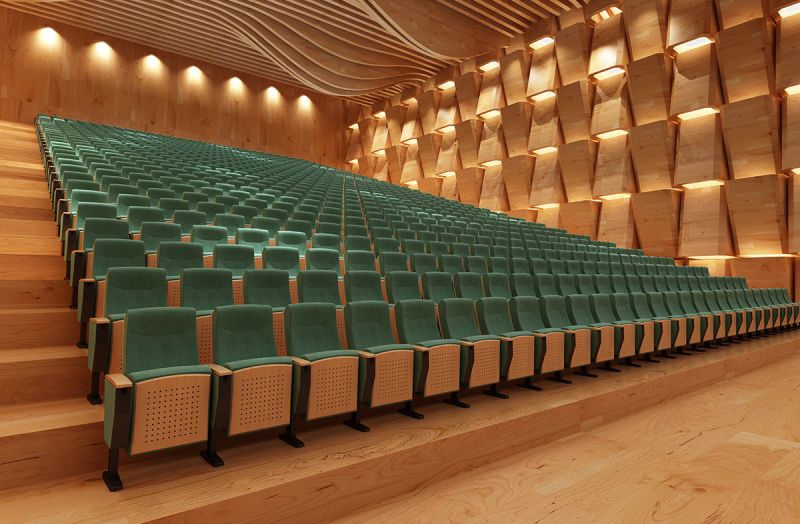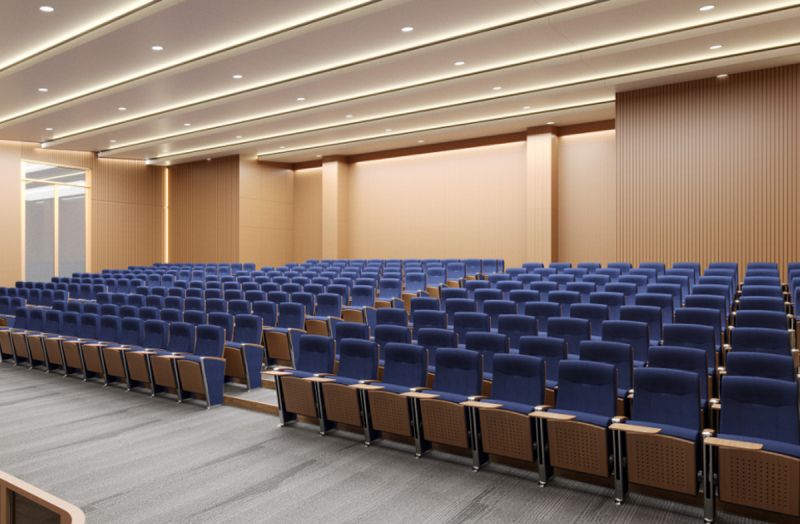Auditorium chairs are a significant investment for venues such as theaters, concert halls, conference centers, and auditoriums. These chairs not only provide comfort and functionality but also contribute to the overall aesthetic and experience of the space. To maximize the longevity of auditorium chairs and ensure that they remain in top condition for years to come, it is essential to follow a regular maintenance routine and address potential issues proactively. This guide will provide valuable tips for maintaining auditorium chairs, preserving their lifespan, and keeping them looking and performing their best.
1. Regular Cleaning and Care
One of the most effective ways to maintain the longevity of auditorium chairs is through consistent cleaning. Regular cleaning helps prevent the buildup of dirt, dust, and debris, which can damage the fabric, padding, and mechanical components of the chairs. Here's how to clean auditorium chairs properly:
1.1. Vacuum the Chairs Regularly
Dust, dirt, and debris can quickly accumulate on the surface and between the cushions of auditorium chairs. Regular vacuuming with an upholstery attachment will remove loose dirt and prevent it from embedding into the fabric or causing friction that may wear out the material over time. Be sure to vacuum around armrests, seat edges, and crevices where debris tends to collect.
1.2. Clean Fabric and Upholstery
For fabric and upholstery maintenance, always follow the manufacturer's care instructions. In general, spot clean stains and spills immediately using a fabric-friendly cleaner. For deeper cleaning, a steam cleaner may help remove embedded dirt without damaging the material. For leather or vinyl upholstery, use a damp cloth with mild soap and water, then wipe it dry. Avoid harsh chemicals that can cause discoloration or cracking.
1.3. Maintain Seat Cushions
Seat cushions should be rotated periodically to ensure even wear. If the cushions are removable, consider flipping them regularly to prevent uneven wear patterns. Additionally, ensure that the padding inside the cushions is not exposed to moisture, which can lead to mold and mildew buildup. In high-traffic areas, consider using seat protectors to reduce wear on the upholstery.
2. Check and Maintain Mechanical Components
Auditorium chairs often feature mechanical components such as reclining mechanisms, foldable seats, or swivel bases. Regular inspection and maintenance of these parts are crucial for the smooth operation of the chairs and for extending their lifespan.
2.1. Inspect and Lubricate Moving Parts
For chairs with moving parts, such as folding seats or reclining mechanisms, ensure that these parts are properly lubricated. Use a silicone-based lubricant on the hinges, bolts, and other moving components to prevent squeaking, stiffness, or rusting. Regular lubrication will help maintain smooth functionality and avoid wear from friction.
2.2. Tighten Loose Bolts and Screws
Over time, the bolts, screws, and fasteners that hold auditorium chairs together may loosen due to repeated use. Periodically check the tightness of all fasteners, particularly in high-use areas, to ensure that the structure of the chairs remains secure. Tightening these components will prevent wobbling, instability, and potential damage to the frame.
2.3. Repair or Replace Damaged Parts Promptly
If you notice any broken or damaged components, such as faulty recliners, missing parts, or malfunctioning folding mechanisms, address these issues promptly. Repairing or replacing damaged parts early will prevent further wear and prevent the need for more expensive repairs down the line. Keep a stock of spare parts for easy replacement when necessary.
3. Protect the Chairs from Environmental Factors
Environmental conditions can significantly impact the lifespan of auditorium chairs. Properly managing temperature, humidity, and exposure to sunlight will help preserve the integrity of the materials and protect them from damage.
3.1. Control Humidity Levels
Excessive humidity can lead to mold, mildew, and deterioration of fabric, padding, and metal components. In areas with high humidity, consider installing dehumidifiers or air conditioning systems to maintain a stable environment. Avoid placing chairs in areas where they may be exposed to water leaks or excessive moisture.
3.2. Protect from Direct Sunlight
Direct sunlight can cause fading, cracking, and weakening of the upholstery and materials over time. If possible, avoid placing auditorium chairs in areas that receive direct sunlight for extended periods. Use window treatments such as blinds or UV-protective film to minimize sun exposure. For outdoor or semi-outdoor venues, opt for weather-resistant or UV-protected materials.
3.3. Maintain Temperature Stability
Extreme temperature fluctuations can cause upholstery and materials to expand and contract, leading to cracking, warping, or fading. Maintain a stable temperature inside the venue to prevent these issues. Avoid placing chairs near heating or cooling vents, which can cause uneven temperature exposure.
4. Implement Usage Guidelines
In busy venues, proper usage guidelines can help preserve the condition of auditorium chairs and prevent premature wear and tear. Educating staff and users about how to handle chairs responsibly will reduce the risk of damage and ensure that chairs remain in top condition for years.
4.1. Limit Heavy Impacts
Encourage users to avoid slamming or roughly adjusting chairs, as this can cause mechanical damage or stress on the frame. Heavy impacts or forceful movements can weaken joints, affect the chair's folding mechanism, or cause upholstery damage. Clear guidelines on the proper handling of chairs can prevent this kind of damage.
4.2. Prevent Overloading
Avoid overloading chairs with excessive weight or pressure. Most auditorium chairs are designed to support a specific weight limit, and exceeding this can damage the chair's structure. Make sure that users are aware of the weight limits and encourage them to use chairs appropriately.
4.3. Use Chair Covers for Protection
For long-term storage or during periods when the auditorium is not in use, consider using protective covers for the chairs. These covers shield the upholstery from dust, dirt, and damage caused by contact with other items. When the venue is in use, these covers can also provide added protection against spills and stains.
5. Regular Inspections and Professional Maintenance
Regular inspections and professional maintenance are essential for identifying potential issues before they become major problems. Conduct periodic checks to assess the condition of chairs and address any concerns promptly. If necessary, hire professionals to perform deep cleaning, upholstery repair, or mechanical servicing to extend the life of your chairs.
5.1. Schedule Annual Inspections
Schedule an annual or bi-annual inspection with a qualified maintenance service to check the overall condition of the chairs. Professionals can identify issues such as worn-out mechanisms, damaged frames, or upholstery problems that may not be immediately visible. Regular professional servicing helps ensure that the chairs continue to function properly and remain safe for use.
5.2. Reupholstery and Refurbishment
If the chairs show signs of wear, such as fabric damage or fading, consider reupholstering or refurbishing them. Professional reupholstery can significantly extend the life of chairs by replacing worn-out fabric, padding, or stitching while preserving the chair's frame and structure. This can be a more cost-effective solution than replacing the entire set of chairs.
6. Conclusion
Maximizing the longevity of auditorium chairs is a combination of routine maintenance, timely repairs, and proper environmental control. Regular cleaning, inspection, and attention to mechanical components can significantly extend the lifespan of your chairs, ensuring that they remain functional, safe, and visually appealing for years to come. By following the tips outlined in this guide, you can protect your investment, reduce long-term costs, and provide a more enjoyable experience for your venue's users.
Post time: Jan-07-2025


